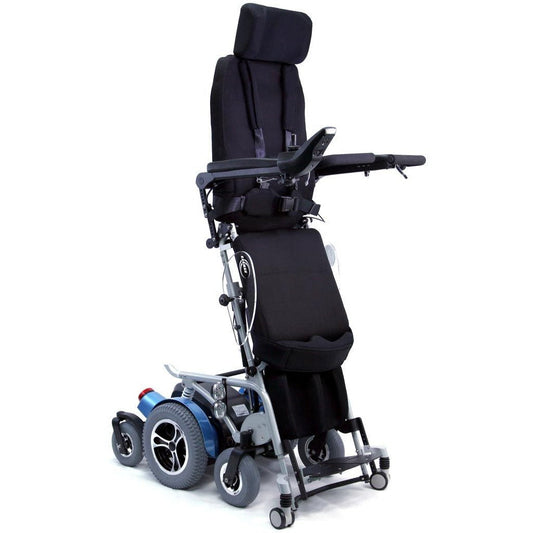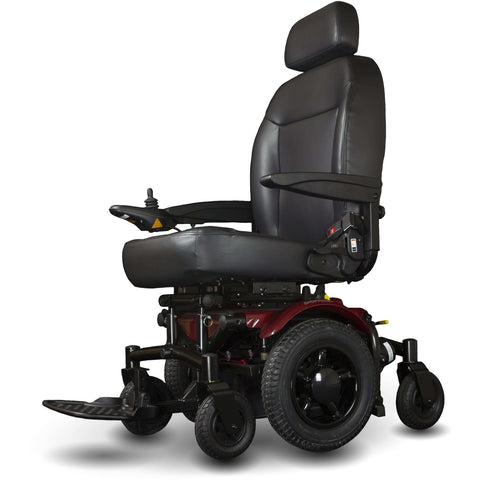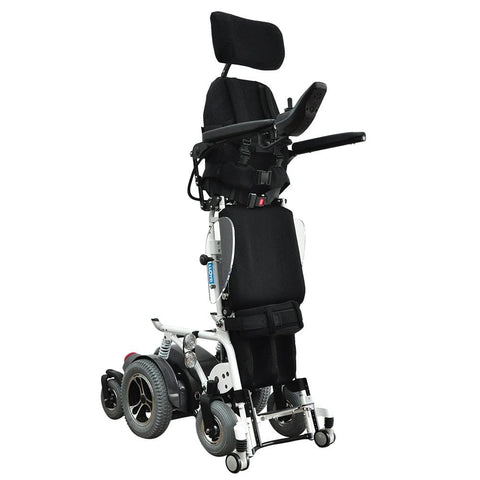Introduction to durable wheelchairs
Durable wheelchairs are designed to withstand heavy daily use and provide long-lasting support for users. These wheelchairs are constructed using strong materials and advanced technology, making them resilient and reliable. They are often used by individuals with active lifestyles or those who require extra durability in their mobility aids. The design and engineering of durable wheelchairs ensure that they can handle various terrains and usage patterns, offering users a greater sense of independence and confidence in their mobility.

Evolution of wheelchair technology
Wheelchair technology has come a long way. Modern wheelchairs are designed for durability, comfort, and ease of use. They are made from lightweight but strong materials, such as aluminum or titanium, to provide a sturdy yet portable option for users. The evolution of wheelchair technology has also led to more advanced features, such as adjustable seating, ergonomic designs, and enhanced maneuverability. These advancements have greatly improved the quality of life for wheelchair users, allowing for greater independence and mobility.
Materials used in modern durable wheelchairs
Modern durable wheelchairs are constructed using a variety of advanced materials to ensure strength and longevity. These materials commonly include aluminum, titanium, and carbon fiber, which are known for their lightweight yet sturdy properties. These materials help to make the wheelchair more maneuverable and easier to transport, while also providing the necessary durability for everyday use. Additionally, some wheelchairs may incorporate specially designed composite materials to further enhance their structural integrity and overall performance.
Advantages and features of durable wheelchairs
Durable wheelchairs offer a range of benefits, including increased strength and stability, which can be crucial for users who lead active lifestyles or require extra support. Many of these wheelchairs are constructed using lightweight but sturdy materials, making them both portable and long-lasting. Additionally, advanced features such as adjustable seating, power-assist options, and all-terrain capabilities provide users with the freedom to navigate various environments easily.
Understanding the design of durable wheelchairs
Wheelchair designs have made significant advancements to improve durability and functionality. The incorporation of lightweight yet robust materials, such as aluminum alloys and carbon fiber, has enhanced the strength and longevity of modern wheelchairs. Additionally, innovative features like reinforced frames and puncture-resistant tires contribute to the overall sturdiness of these wheelchairs. These advancements have enabled wheelchair users to confidently navigate various terrains while experiencing minimal wear and tear on their equipment.
Innovations in mobility and accessibility
Innovations in mobility and accessibility have led to the development of highly durable wheelchairs equipped with advanced technology. These modern wheelchairs are designed to provide increased comfort, stability, and maneuverability for users. Some of the key innovations include lightweight and durable materials, advanced suspension systems, ergonomic seating, and customizable controls. Additionally, the integration of smart technology and connectivity features enables users to have greater independence and control over their mobility devices. These advancements have significantly improved the overall quality of life for individuals with mobility challenges.
Customization and adaptability of durable wheelchairs
Modern durable wheelchairs are designed with customization and adaptability in mind. This means that they can be tailored to fit the specific needs and preferences of the user. Some key points to understand about the customization and adaptability of durable wheelchairs include:
- Customization: Durable wheelchairs can be customized to fit the user's body measurements, lifestyle, and mobility requirements. This allows for a comfortable and personalized fit, reducing the risk of discomfort or injury.
- Adaptability: Modern wheelchairs are designed to adapt to different environments and activities. They are versatile and can be equipped with various features such as adjustable seat heights, tilt-in-space options, and multiple seating options for better support and comfort.
- Ergonomics: Durable wheelchairs are constructed with ergonomic considerations to promote better posture, reduce pressure points, and provide optimal support for the user.
Understanding the customization and adaptability of durable wheelchairs is essential for individuals seeking a personalized and functional mobility solution.
Maintenance and durability of modern wheelchairs
Modern wheelchairs are designed to be durable and low-maintenance. They are constructed using strong, lightweight materials such as titanium or carbon fiber, making them resistant to wear and tear. The use of advanced technology in manufacturing ensures that these wheelchairs are sturdy and long-lasting. Additionally, many modern wheelchairs feature easy-to-clean surfaces and components, reducing the effort required for maintenance. This makes them a practical and reliable mobility solution for daily use.
User experience and testimonials
Wheelchair users emphasized the importance of testing out different models to find one that aligns with their lifestyle and needs. One user recommended trying out a chair for a few days before making a decision, emphasizing how crucial it is to feel comfortable and supported in the chair. Another user shared their positive experience with a particular wheelchair model, highlighting its durability and ease of maneuverability. It's evident that firsthand user experiences can provide valuable insights for those in search of the most suitable wheelchair.
Conclusion: The future of durable wheelchairs
The future of durable wheelchairs looks promising with the continuous advancements in technology. Engineers are constantly developing new materials and design techniques to enhance the durability and performance of wheelchairs. Some innovations to keep an eye on include:
- Carbon fiber and titanium construction for lightweight yet strong frames.
- Smart technology integration, such as sensors and automation, to improve user experience and functionality.
- 3D printing for custom-made parts that are both durable and lightweight.
- Enhanced ergonomic designs for improved comfort and reduced risk of injury.
These developments indicate that the future of durable wheelchairs will provide users with more reliable, comfortable, and efficient mobility solutions.










